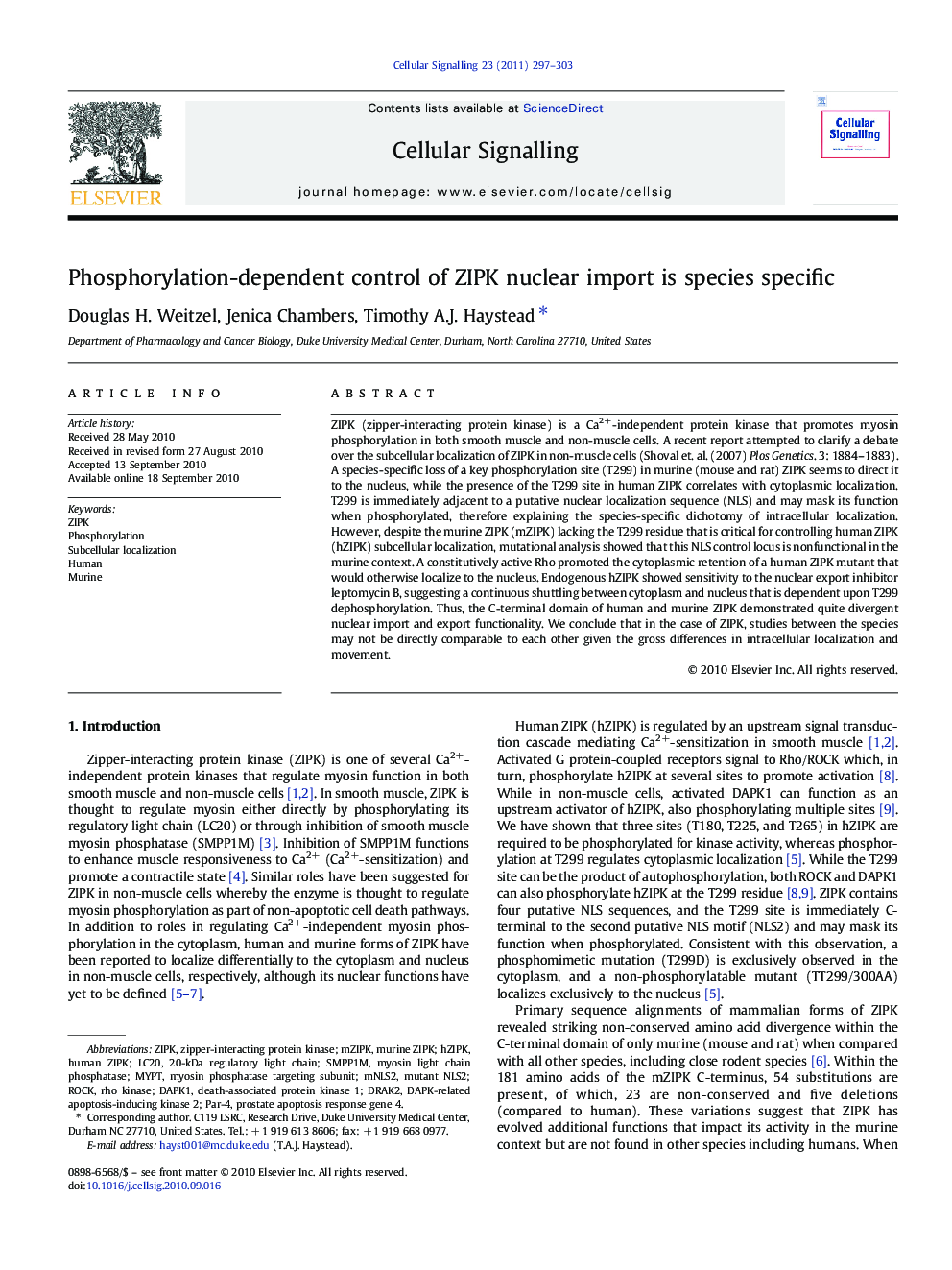| Article ID | Journal | Published Year | Pages | File Type |
|---|---|---|---|---|
| 1963843 | Cellular Signalling | 2011 | 7 Pages |
ZIPK (zipper-interacting protein kinase) is a Ca2+-independent protein kinase that promotes myosin phosphorylation in both smooth muscle and non-muscle cells. A recent report attempted to clarify a debate over the subcellular localization of ZIPK in non-muscle cells (Shoval et. al. (2007) Plos Genetics. 3: 1884–1883). A species-specific loss of a key phosphorylation site (T299) in murine (mouse and rat) ZIPK seems to direct it to the nucleus, while the presence of the T299 site in human ZIPK correlates with cytoplasmic localization. T299 is immediately adjacent to a putative nuclear localization sequence (NLS) and may mask its function when phosphorylated, therefore explaining the species-specific dichotomy of intracellular localization. However, despite the murine ZIPK (mZIPK) lacking the T299 residue that is critical for controlling human ZIPK (hZIPK) subcellular localization, mutational analysis showed that this NLS control locus is nonfunctional in the murine context. A constitutively active Rho promoted the cytoplasmic retention of a human ZIPK mutant that would otherwise localize to the nucleus. Endogenous hZIPK showed sensitivity to the nuclear export inhibitor leptomycin B, suggesting a continuous shuttling between cytoplasm and nucleus that is dependent upon T299 dephosphorylation. Thus, the C-terminal domain of human and murine ZIPK demonstrated quite divergent nuclear import and export functionality. We conclude that in the case of ZIPK, studies between the species may not be directly comparable to each other given the gross differences in intracellular localization and movement.
